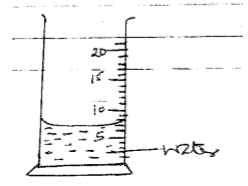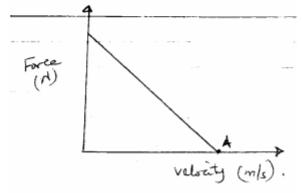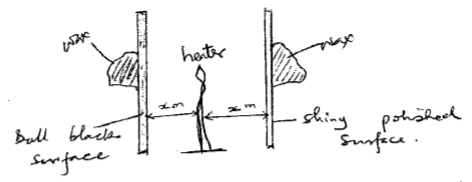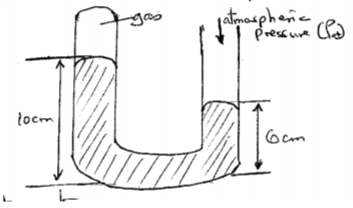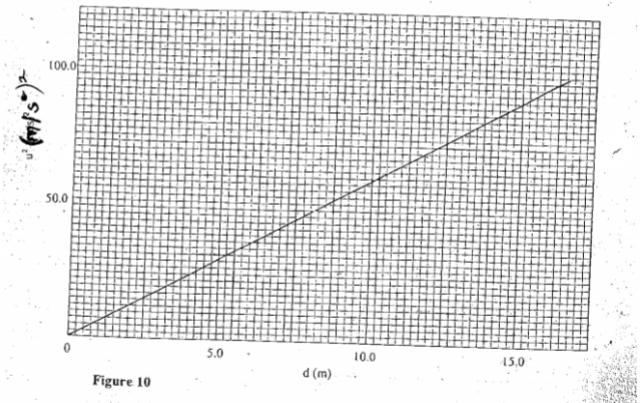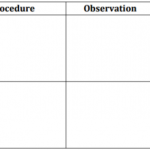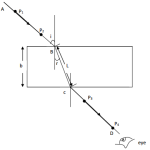KNEC KCSE Physics Paper 1 Question Paper / 2016 KASSU JET JOINT EXAMINATION
2016 KASSU JET JOINT EXAMINATION
Physics Paper 1
SECTION A (25 Marks)
Attempt all the questions in this section.
The figure below shows a measuring cylinder with some water in it.
A metal cube of mass 18g is submerged in it. Given that the density of the metal is 4.167 g/cm3, indicate the new level of the liquid.
2 marks
Explain how temperature affects surface tension.
…………………………………………………………………………………………………..
…………………………………………………………………………………………………..
…………………………………………………………………………………………………..
2 marks
A drop of blue ink is introduced at the bottom of a beaker containing water. It is observed
that after sometime, all the water in the beaker turns blue. Name the process that takes place.
…………………………………………………………………………………………………..
1 marks
The figure below shows a uniform metre rule pivoted at the 20cm mark. It is balanced by a
weight of 3.5N suspended at the 5cm mark.
Determine the weight of the metre rule.
…………………………………………………………………………………………………..
…………………………………………………………………………………………………..
…………………………………………………………………………………………………..
…………………………………………………………………………………………………..
…………………………………………………………………………………………………..
3 marks
The diagram below shows a sketch graph of resultant force against velocity for a body falling
through air.
(a) Give the name given to the velocity of the body at point a. (1 mk)
…………………………………………………………………………………………………..
(b) Explain why the resultant force is equal to zero for the velocity given in (a) above.
(2 mks)
…………………………………………………………………………………………………..
…………………………………………………………………………………………………..
…………………………………………………………………………………………………..
…………………………………………………………………………………………………..
3 marks
A student dipped a mercury thermometer into a very hot liquid.
(a) State what is observed. (1 mk)
…………………………………………………………………………………………………..
(b) Explain observation in (a) above. (1 mk)
…………………………………………………………………………………………………..
…………………………………………………………………………………………………..
2 marks
Three identical springs A, B and C are used to support 25.5N weights as shown below.
If the weight of the horizontal bar is 2.5N, determine the extension of each spring given that
6N causes an extension of 2 cm.
…………………………………………………………………………………………………..
…………………………………………………………………………………………………..
…………………………………………………………………………………………………..
…………………………………………………………………………………………………..
…………………………………………………………………………………………………..
…………………………………………………………………………………………………..
2 marks
The diagram below shows the effect of heat from the heater on two surfaces ……………
surface.
(i) How does the heat from the heat reach the surface? (1 mk)
…………………………………………………………………………………………………..
(ii) State what is observed from the set up after a few minutes. (1 mk)
…………………………………………………………………………………………………..
2 marks
Trees planted along or near the road seem to bend towards the road. State and explain the
observation.
…………………………………………………………………………………………………..
…………………………………………………………………………………………………..
…………………………………………………………………………………………………..
…………………………………………………………………………………………………..
…………………………………………………………………………………………………..
…………………………………………………………………………………………………..
2 marks
Figure below shows a u-tube upon which a gas has been enclosed on one end with mercury in it.
Calculate the pressure of the gas.
…………………………………………………………………………………………………..
…………………………………………………………………………………………………..
…………………………………………………………………………………………………..
…………………………………………………………………………………………………..
…………………………………………………………………………………………………..
…………………………………………………………………………………………………..
2 marks
State two sources of errors in an oil drop experiment.
…………………………………………………………………………………………………..
…………………………………………………………………………………………………..
…………………………………………………………………………………………………..
…………………………………………………………………………………………………..
2 marks
SECTION B (55 Marks)
Attempt all the questions in this section.
(a) (i) Define the term angular velocity (𝜔𝜔). (1 mk)
…………………………………………………………………………………………………..
…………………………………………………………………………………………………..
(ii) A body in a circular path is said to be accelerating and yet it moves in a constant
speed. Explain. (1 mk)
…………………………………………………………………………………………………..
…………………………………………………………………………………………………..
(c) A stone of mass 500g is attached to a string of length 50cm which can break when the
tension exceeds 20N. The stone is whirled by a student until the string breaks at a point
100 cm above the ground. (Take g, as 10 m/s2
).
(i) In what position does the string break. (1 mk)
…………………………………………………………………………………………………..
…………………………………………………………………………………………………..
(ii) Calculate the angular velocity at which the string breaks. (3 mks)
…………………………………………………………………………………………………..
…………………………………………………………………………………………………..
…………………………………………………………………………………………………..
…………………………………………………………………………………………………..
…………………………………………………………………………………………………..
…………………………………………………………………………………………………..
(iii) Time taken by the stone to reach the ground. (3 mks)
…………………………………………………………………………………………………..
…………………………………………………………………………………………………..
…………………………………………………………………………………………………..
…………………………………………………………………………………………………..
…………………………………………………………………………………………………..
…………………………………………………………………………………………………..
(iv) Distance from the feet of the student to the point the stone strokes the ground.
(2 mks)
…………………………………………………………………………………………………..
…………………………………………………………………………………………………..
…………………………………………………………………………………………………..
…………………………………………………………………………………………………..
11 marks
(a) A hydraulic lift is used to raise a load of 100 kg through a height of 2.0 m. the radius of
the effort piston is 1.6cm while the load piston has a radius of 8.0cm. If the machine is
75% efficient; calculate:
(i) the velocity ratio. (2 mks)
…………………………………………………………………………………………………..
…………………………………………………………………………………………………..
…………………………………………………………………………………………………..
…………………………………………………………………………………………………..
(ii) mechanical advantage (1 mk)
…………………………………………………………………………………………………..
…………………………………………………………………………………………………..
…………………………………………………………………………………………………..
(iii) effort required (1 mk)
…………………………………………………………………………………………………..
…………………………………………………………………………………………………..
…………………………………………………………………………………………………..
(iv) energy wasted in using the machine (2 mks)
…………………………………………………………………………………………………..
…………………………………………………………………………………………………..
…………………………………………………………………………………………………..
…………………………………………………………………………………………………..
(b) A block and tackle pulley system is used to lift a mass of 200 kg. If the machine has a
velocity ratio of 5, and efficiency of 80%;
(i) Sketch in the space provided below the possible arrangement of the system.
(2 mks)
(ii) Determine the effort required to lift the load. (2 mks)
…………………………………………………………………………………………………..
…………………………………………………………………………………………………..
…………………………………………………………………………………………………..
…………………………………………………………………………………………………..
10 marks
(a) State Newton’s first law of motion. (1 mk)
…………………………………………………………………………………………………..
…………………………………………………………………………………………………..
(b) A wooden block resting on a horizontal bench is given an initial velocity, U, so that it
slides on the coach surface for a distance, d, before coming to a stop. The values of, d,
were measured and recorded for values of initial velocity. The figure below shows a
graph of U2 against d.
(i) Determine the slope of the graph. (3 mks)
(ii) Given that U2 = 20 kd, where K is a constant for the bench surface, determine the
value of K from the graph. (3 mks)
(iii) State how the value of K would be affected by a change in the roughness of the
bench surface. (2 mks)
…………………………………………………………………………………………………..
…………………………………………………………………………………………………..
…………………………………………………………………………………………………..
…………………………………………………………………………………………………..
(c) A car of mass 800 kg starts from rest and accelerates at 1.2 ms-2. Determine its
momentum after it has moved 400m from the starting point. (4 mks)
…………………………………………………………………………………………………..
…………………………………………………………………………………………………..
…………………………………………………………………………………………………..
…………………………………………………………………………………………………..
…………………………………………………………………………………………………..
…………………………………………………………………………………………………..
…………………………………………………………………………………………………..
…………………………………………………………………………………………………..
13 marks
300g of ice at 0oc is dropped into a copper calorimeter containing warm water of mass 60g at
60oc. it’s observed that only 80% of ice melted.
(Take: Specific heat capacity of water = 4200 Jkg-1k-1
Heat capacity of copper = 400 JK-1)
(a) Determine the final temperature of the mixture. (1 mk)
…………………………………………………………………………………………………..
…………………………………………………………………………………………………..
…………………………………………………………………………………………………..
(b) Determine the heat lost by calorimeter. (2 mks)
…………………………………………………………………………………………………..
…………………………………………………………………………………………………..
…………………………………………………………………………………………………..
…………………………………………………………………………………………………..
…………………………………………………………………………………………………..
…………………………………………………………………………………………………..
(c) Determine the heat lost by warm water. (2 mks)
…………………………………………………………………………………………………..
…………………………………………………………………………………………………..
…………………………………………………………………………………………………..
…………………………………………………………………………………………………..
…………………………………………………………………………………………………..
…………………………………………………………………………………………………..
(d) Determine the specific latent heat of fusion of ice. (3 mks)
…………………………………………………………………………………………………..
…………………………………………………………………………………………………..
…………………………………………………………………………………………………..
…………………………………………………………………………………………………..
…………………………………………………………………………………………………..
(e) It’s observed that if the temperature if warm water used was 80oc, then all the ice could
have melted. What would be the final temperature of the mixture? Use the value of
specific latent heat of fusion obtained in (d) above. (3 mks)
…………………………………………………………………………………………………..
…………………………………………………………………………………………………..
…………………………………………………………………………………………………..
…………………………………………………………………………………………………..
…………………………………………………………………………………………………..
…………………………………………………………………………………………………..
11 marks
(a) A concrete block of value, V, is totally immersed in sea water of density, S. Write an
expression for the upthrust on the block. (1 mk)
…………………………………………………………………………………………………..
…………………………………………………………………………………………………..
(b) A certain solid of volume 50 cm3 displaces 10 cm3 of kerosene (density 800 kg/m3).
When floating. Determine the density of the solid. (4 mks)
…………………………………………………………………………………………………..
…………………………………………………………………………………………………..
…………………………………………………………………………………………………..
…………………………………………………………………………………………………..
…………………………………………………………………………………………………..
…………………………………………………………………………………………………..
(c) State the condition necessary for a body to float in a fluid. (1 mk)
…………………………………………………………………………………………………..
…………………………………………………………………………………………………..
6 marks
(a) A mercury thread 200 mm long traps a gas in a long glass tube. The length of the gas
column is 100 cm when the tube if held horizontally. The atmospheric pressure is
750 mmHg. Calculate the length of the gas column when the tube is held vertically with
the open end facing downwards. (3 mks)
…………………………………………………………………………………………………..
…………………………………………………………………………………………………..
…………………………………………………………………………………………………..
…………………………………………………………………………………………………..
…………………………………………………………………………………………………..
…………………………………………………………………………………………………..
(b) State Boyle’s law. (1 mk)
…………………………………………………………………………………………………..
…………………………………………………………………………………………………..
(c) 250 cm3 of a gas is collected at a pressure of 900 mmHg and 27oc temperature.
Determine the volume of this gas if the pressure is reduced to 500 mmHg and
temperature 19oc. (2 mks)
…………………………………………………………………………………………………..
…………………………………………………………………………………………………..
…………………………………………………………………………………………………..
…………………………………………………………………………………………………..
…………………………………………………………………………………………………..
6 marks
